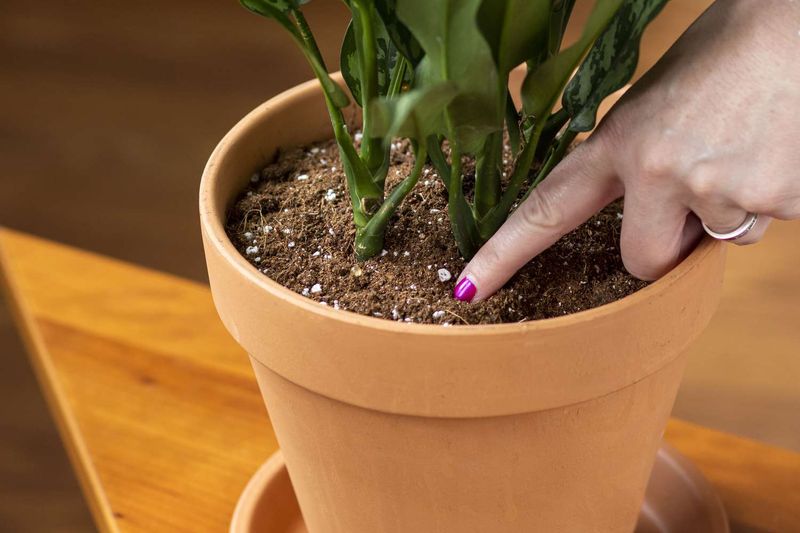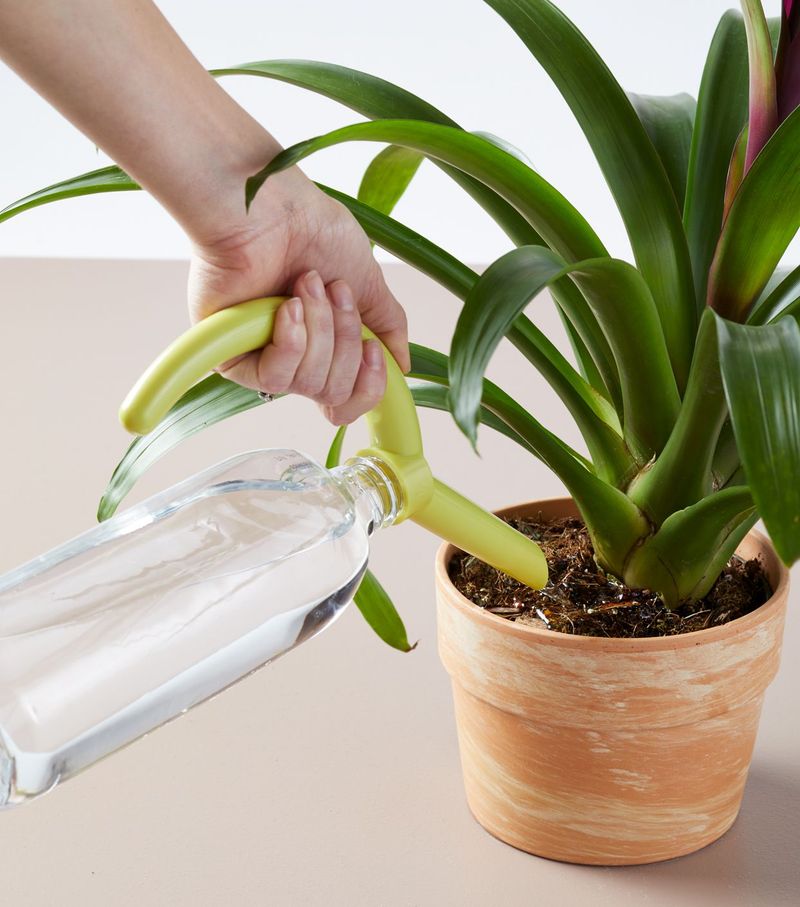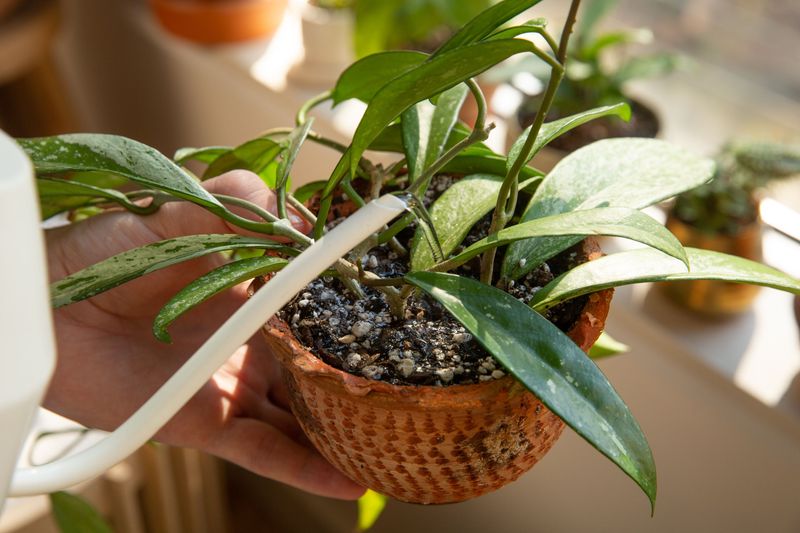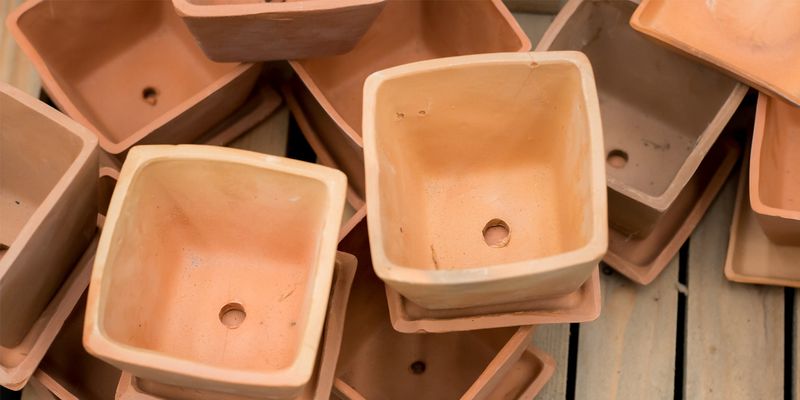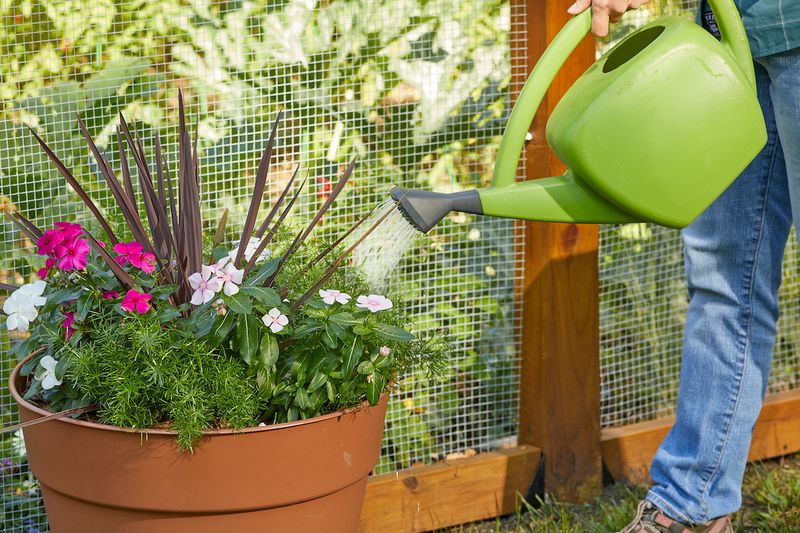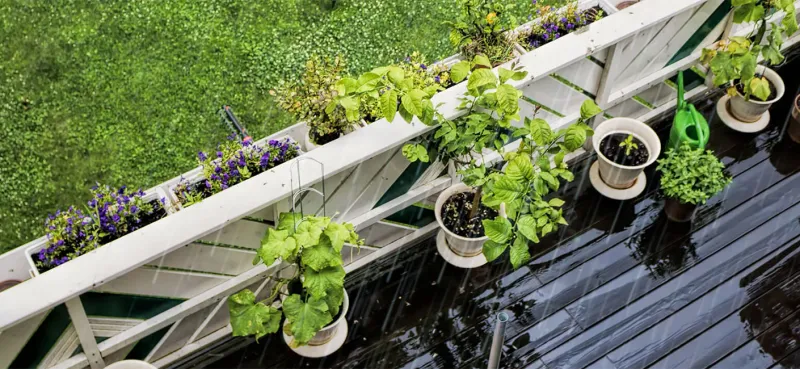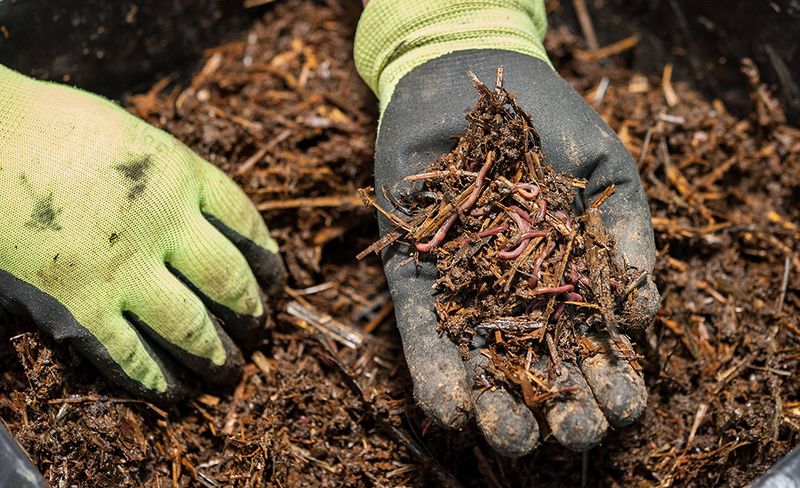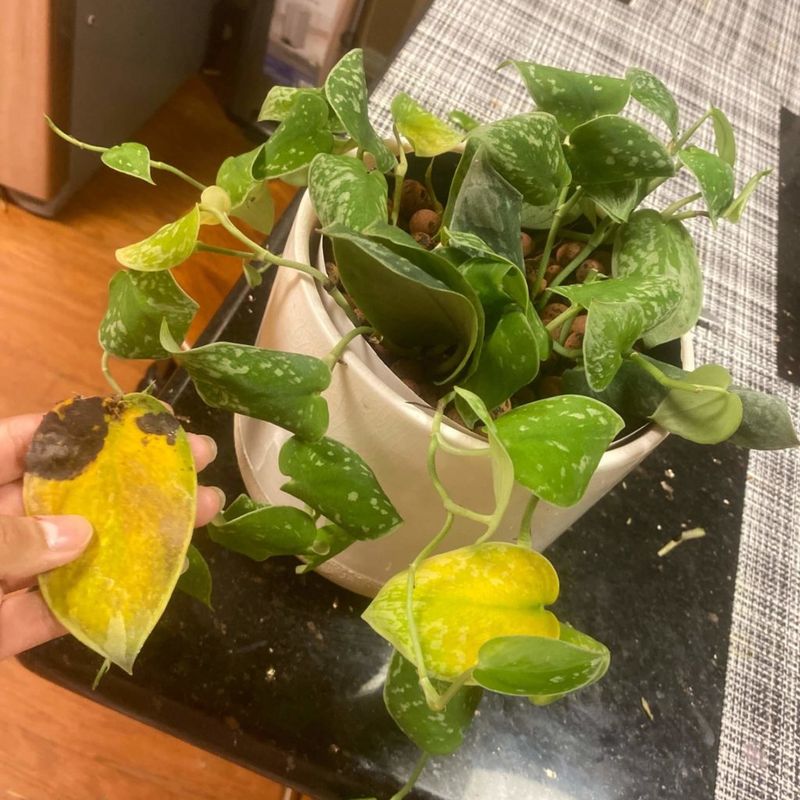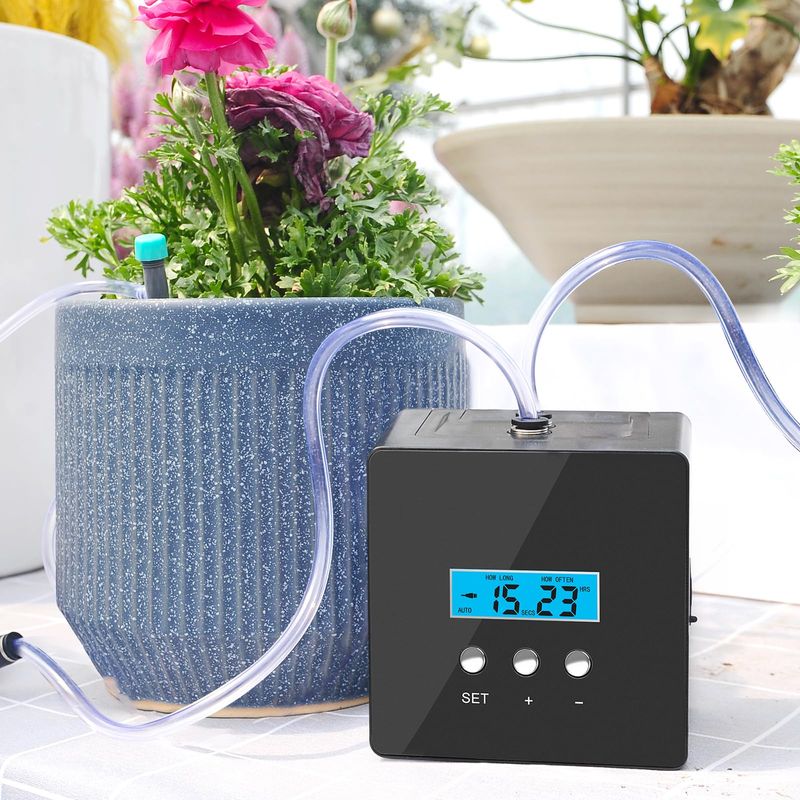Watering potted plants can be a delicate balancing act, as you strive to provide just the right amount of hydration without overdoing it.
In this guide, we share ten essential tips that will help you master the art of watering your potted plants, ensuring they thrive and flourish in their containers.
1. Check the Soil Before You Water
Before reaching for the watering can, take a moment to check the soil. Insert your finger about an inch or two into the soil to assess its moisture level. If it feels dry to the touch, it’s time to water. This simple yet effective method helps you avoid the common pitfall of overwatering.
By getting in touch with the soil, you create a stronger connection with your plants. Not only is this a practical step, but it also fosters mindfulness in your gardening routine. So, remember, a quick soil check goes a long way.
2. Water Early in the Day
Rise and shine, gardeners! Watering your plants early in the day is a secret weapon in your gardening toolkit. The morning air is cool and the sun isn’t at its peak, reducing evaporation rates and giving your plants ample time to absorb moisture.
This practice prepares your plants for the heat of the day, ensuring they remain hydrated. Plus, it sets a tranquil tone for your day, as you nurture your green companions while the world awakens. Early watering is not just a task; it’s a moment of peace.
3. Avoid Wetting the Leaves
Directing water right at the base of your plants can prevent potential issues. Wet leaves can lead to mold, fungal diseases, and other unwanted problems. By focusing the water on the soil, you ensure the roots get the hydration they need without risking the health of the foliage.
It’s a subtle adjustment to your routine but can make all the difference. Keep those leaves dry and your plants will thank you with robust growth. Consider this your gentle reminder to aim wisely when watering.
4. Use Containers with Drainage Holes
Every plant deserves a home that allows them to thrive, and drainage holes are a key feature. These holes at the bottom of your pots prevent water from stagnating and causing root rot, a gardener’s worst nightmare.
If your plants are in containers without drainage, consider adding holes or using them as decorative outer covers. This simple step ensures excess water escapes, keeping your plant’s roots healthy. A well-drained pot is a happy pot, encouraging a flourishing plant life.
5. Water Deeply, Not Just a Little
Watering deeply, where water penetrates the entire root zone, encourages robust root growth. Shallow watering, on the other hand, leads to weak roots and stunted growth. Make it a habit to water until you see excess draining out of the bottom.
This practice strengthens your plants, enabling them to withstand dry spells more effectively. Think of it as laying a strong foundation for your plants to thrive. Deep watering is the key to resilient and vigorous plants, bringing vitality to your home garden.
6. Monitor Daily in Hot Weather
On sweltering days, your plants need extra attention. Monitoring soil moisture daily ensures they’re not drying out. In extreme heat, plants may need watering more than once a day.
This vigilance keeps your plants from succumbing to heat stress and dehydration. It’s about being in tune with the weather and responsive to your plants’ needs. An observant gardener ensures no plant is left thirsty, especially when temperatures soar.
7. Don’t Rely on Rain Alone
While rain is a welcome blessing, it often doesn’t suffice for potted plants. Containers can hinder rain from reaching the roots deeply. Always check the soil moisture after a shower to decide if supplemental watering is needed.
This practice ensures your plants receive consistent care despite the weather. Relying solely on rain might leave your plants’ thirst unquenched. Be proactive and check the soil, giving your plants the attention they truly deserve.
8. Use Mulch to Retain Moisture
Mulch is more than a decorative touch; it’s your ally in moisture retention. By adding a thin layer of mulch on top of the soil, you reduce evaporation and keep roots cool.
This protective barrier helps your plants maintain steady hydration levels, especially during hot days. Mulch not only conserves water but also adds a touch of beauty to your pots. It’s a simple yet effective way to support your plants’ health and vitality.
9. Avoid Overwatering
Overwatering is a common mistake that can lead to yellow leaves and soggy soil. It’s vital to observe your plant’s signals and adjust your watering habits accordingly. Soggy soil is a cue to ease up on the watering can.
Balance is key; allowing the topsoil to dry slightly prevents root rot. By paying attention to your plant’s needs, you foster an environment where they can flourish without drowning. Always remember, more water isn’t always better.
10. Consider Self-Watering Pots or Drip Systems
For those with busy schedules, self-watering pots or drip systems are a lifesaver. They deliver consistent moisture, ensuring your plants never go thirsty. These tools are perfect for vacations or simply easing daily chores.
Such systems allow you to maintain a thriving garden without constant worry. They provide peace of mind, knowing your plants receive proper care even when you’re not around. Consider them a practical solution for modern gardeners seeking convenience and efficiency.

